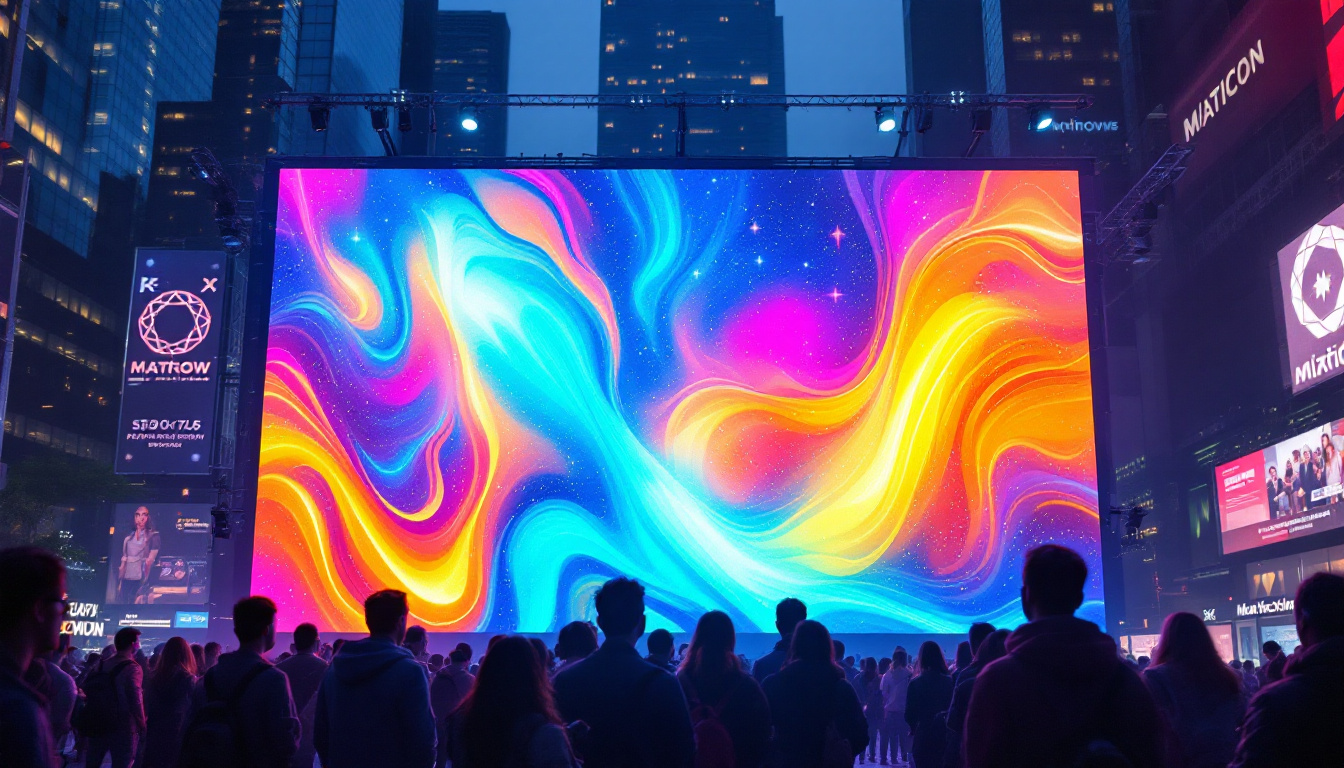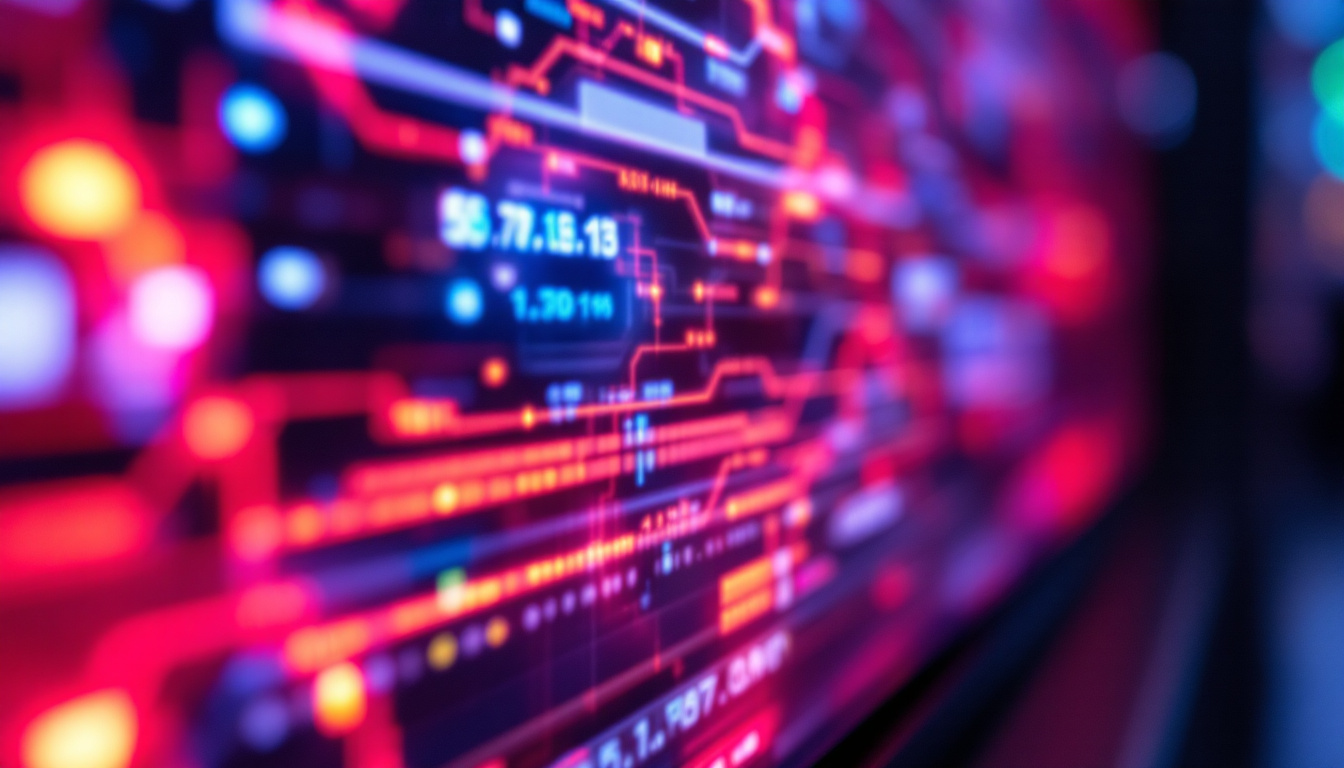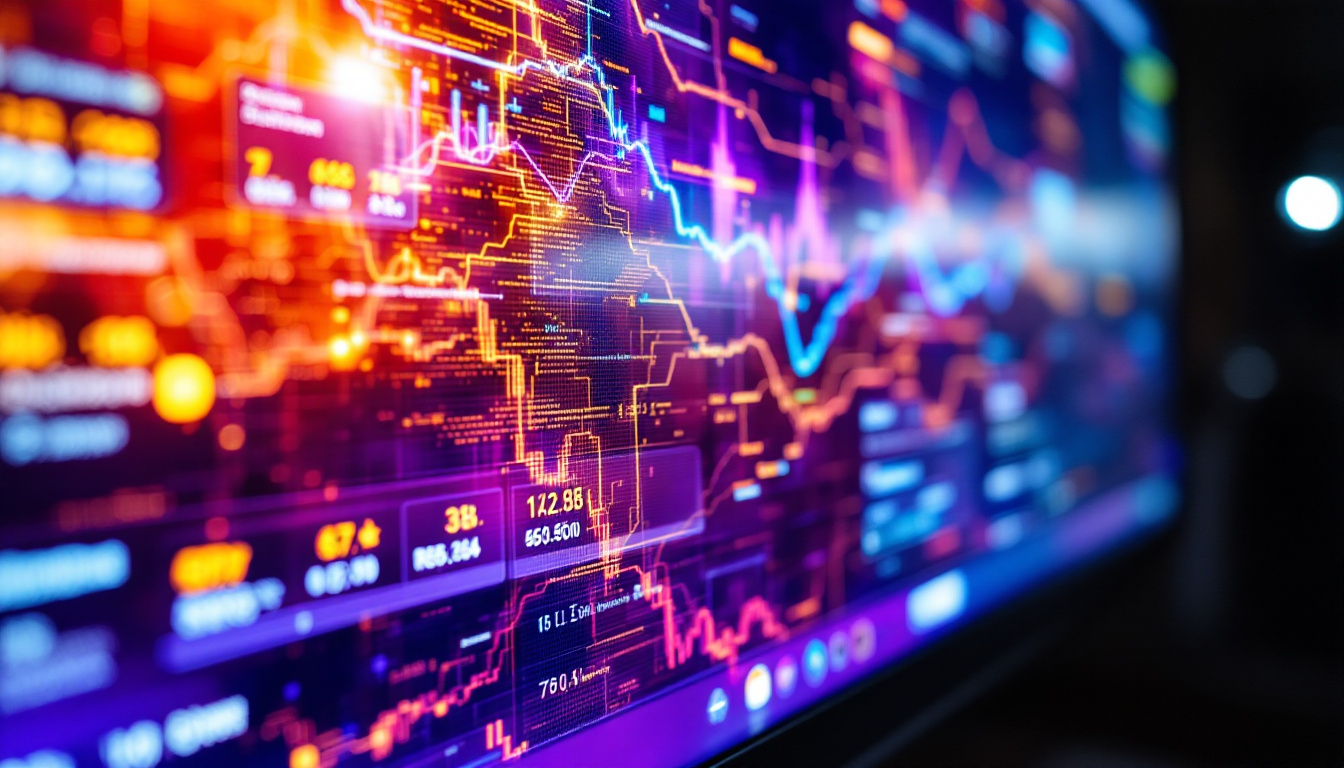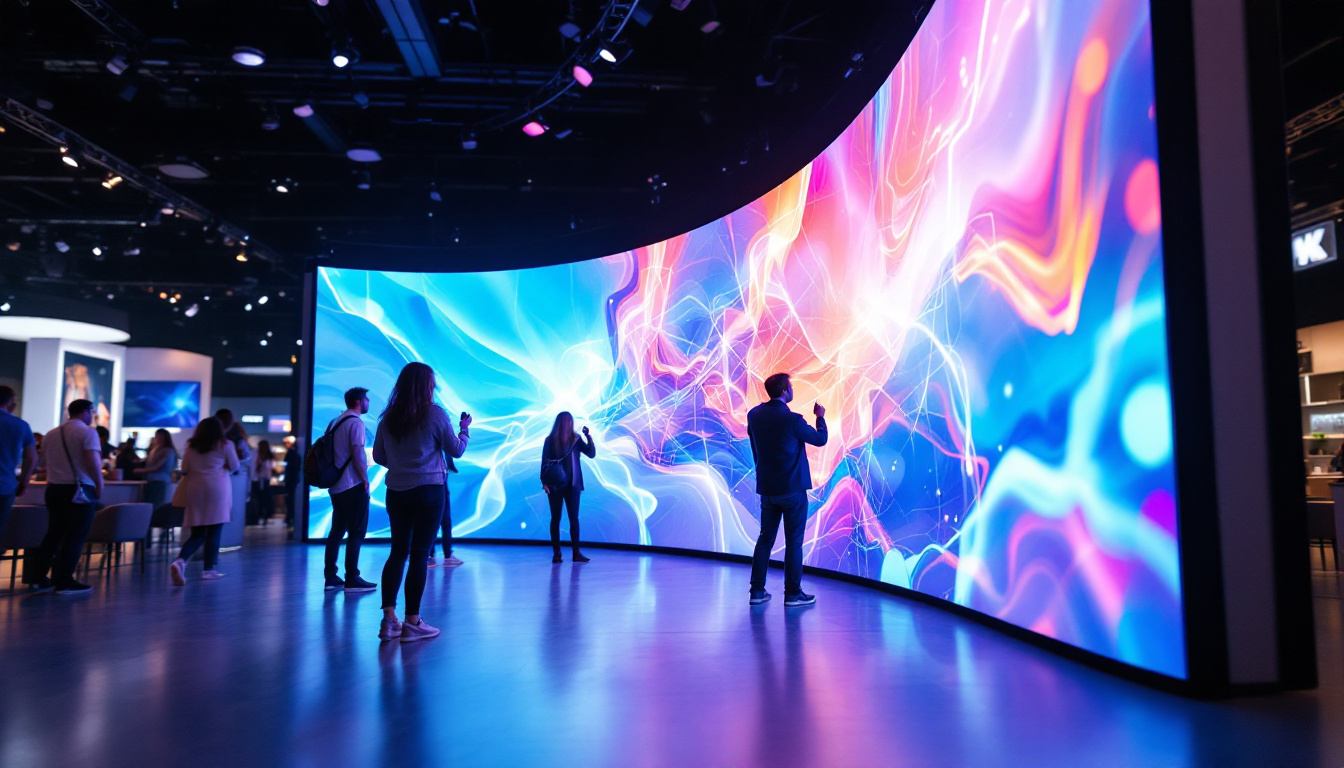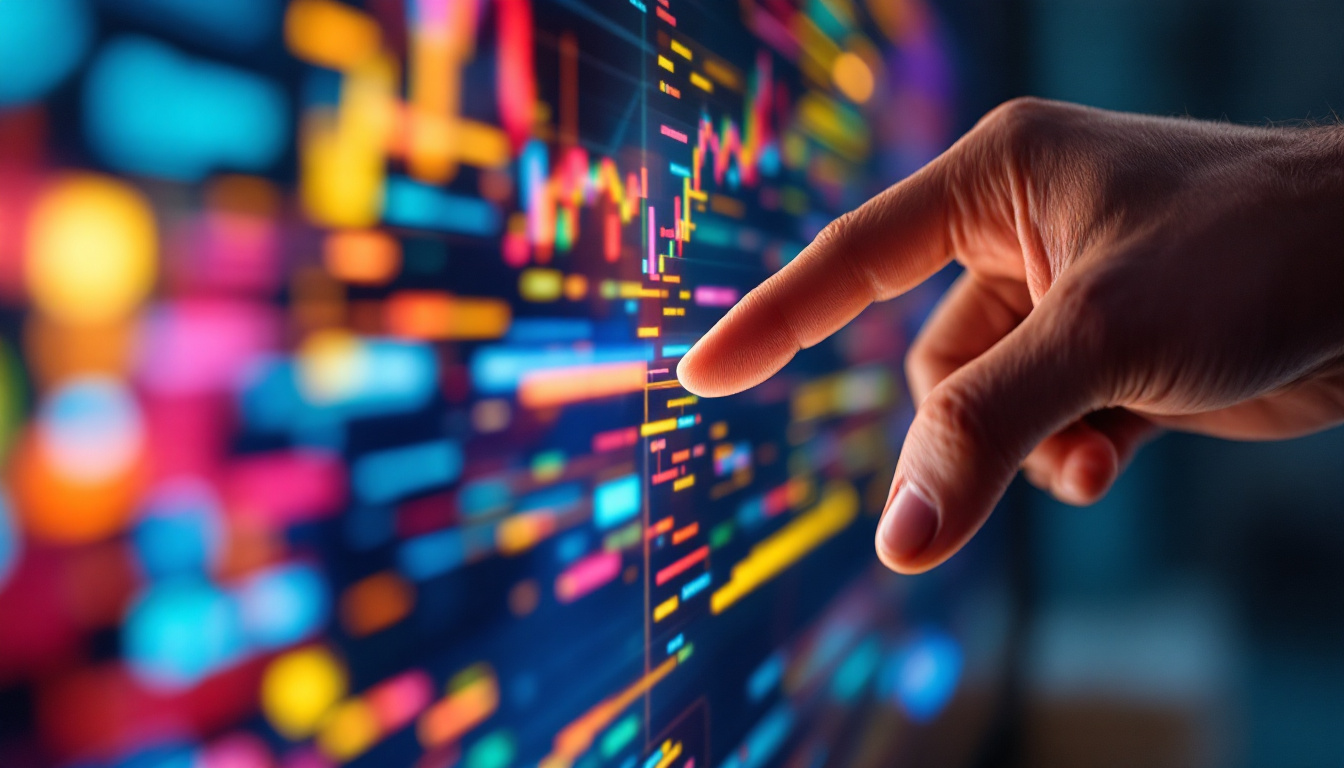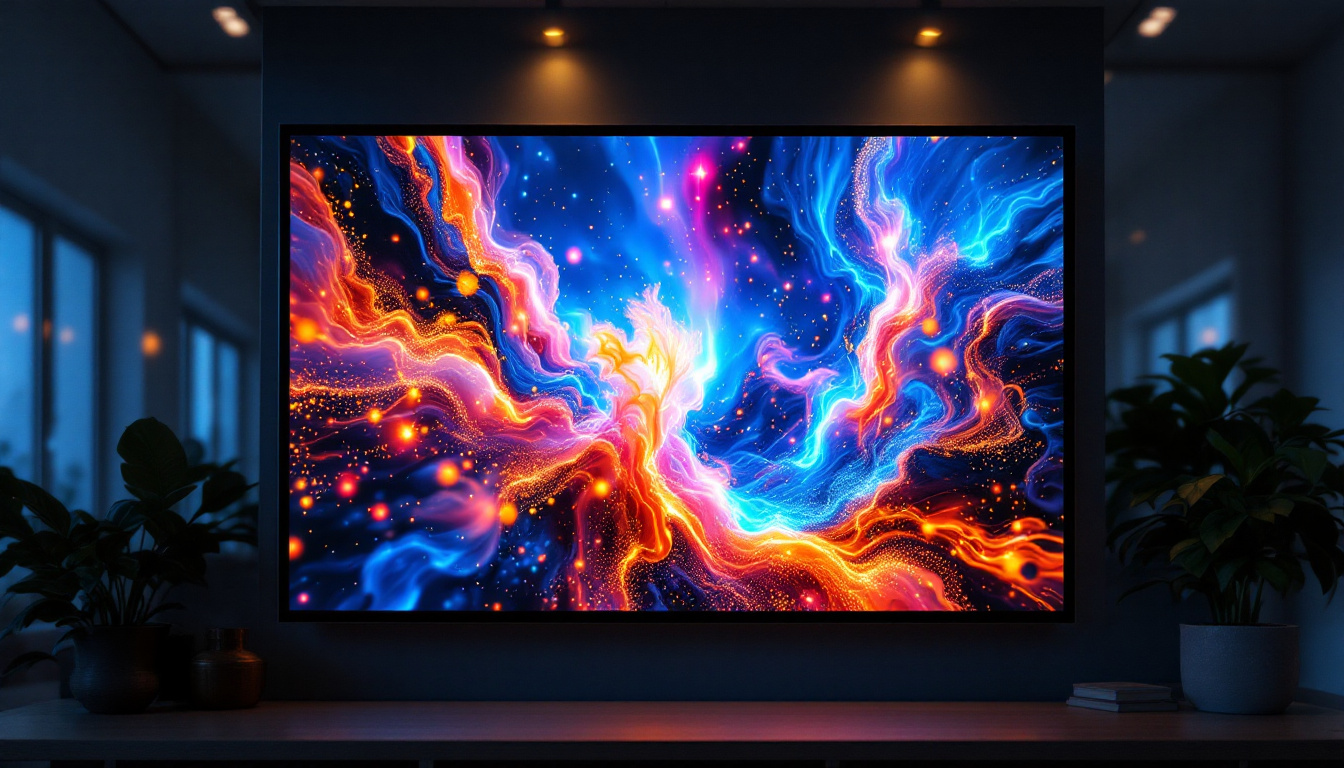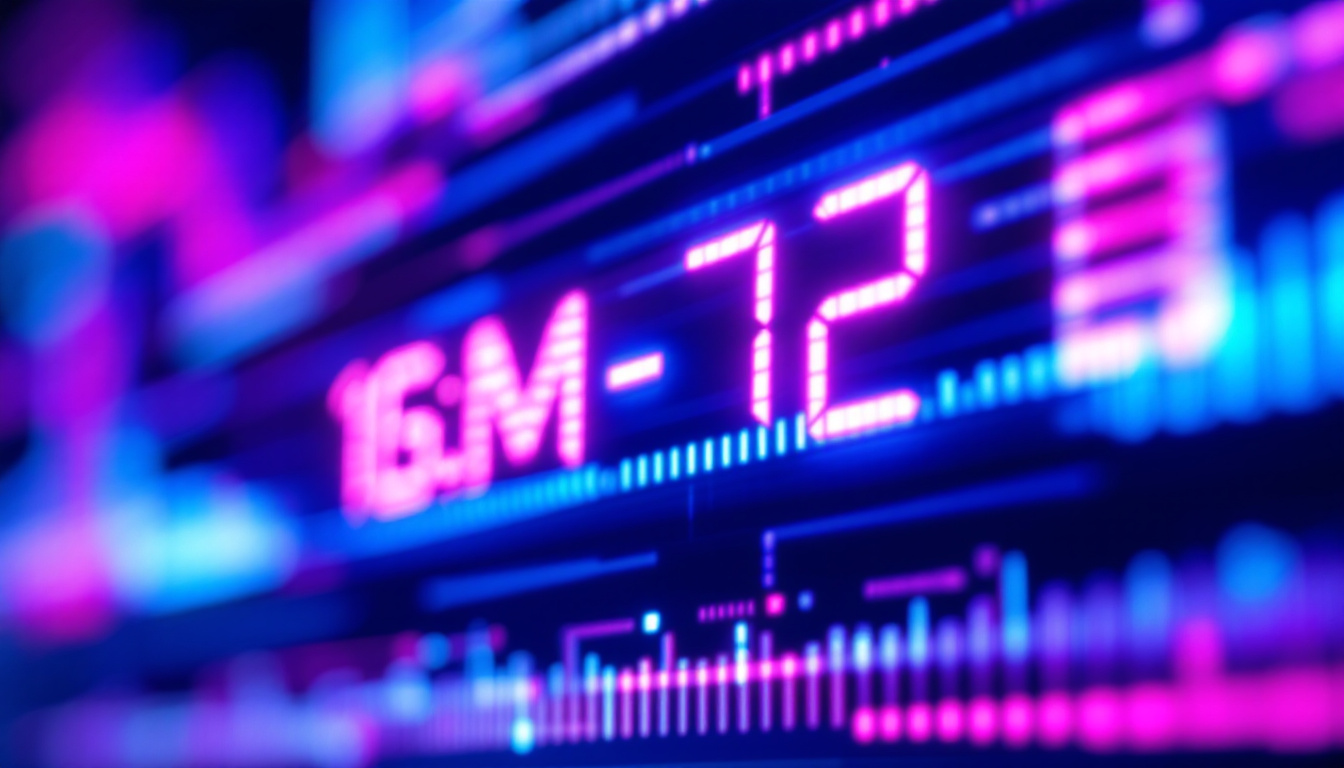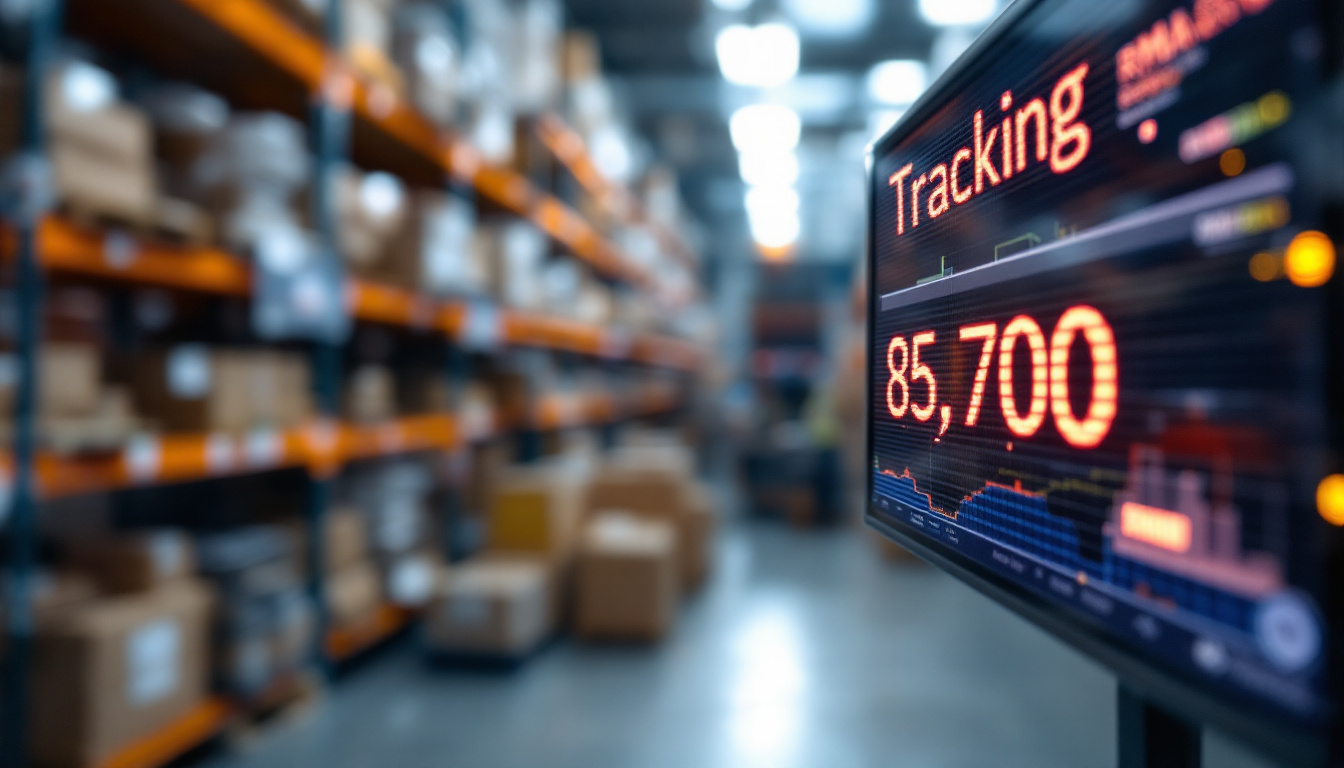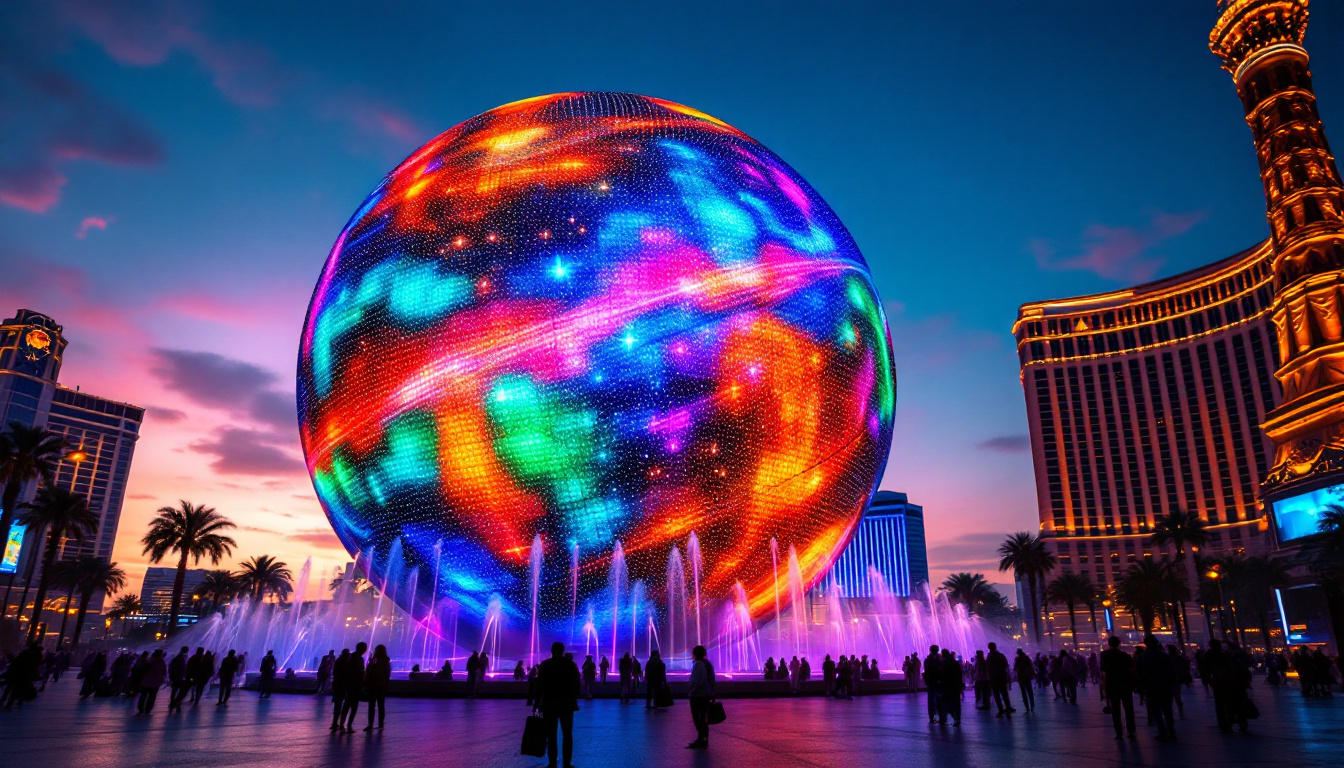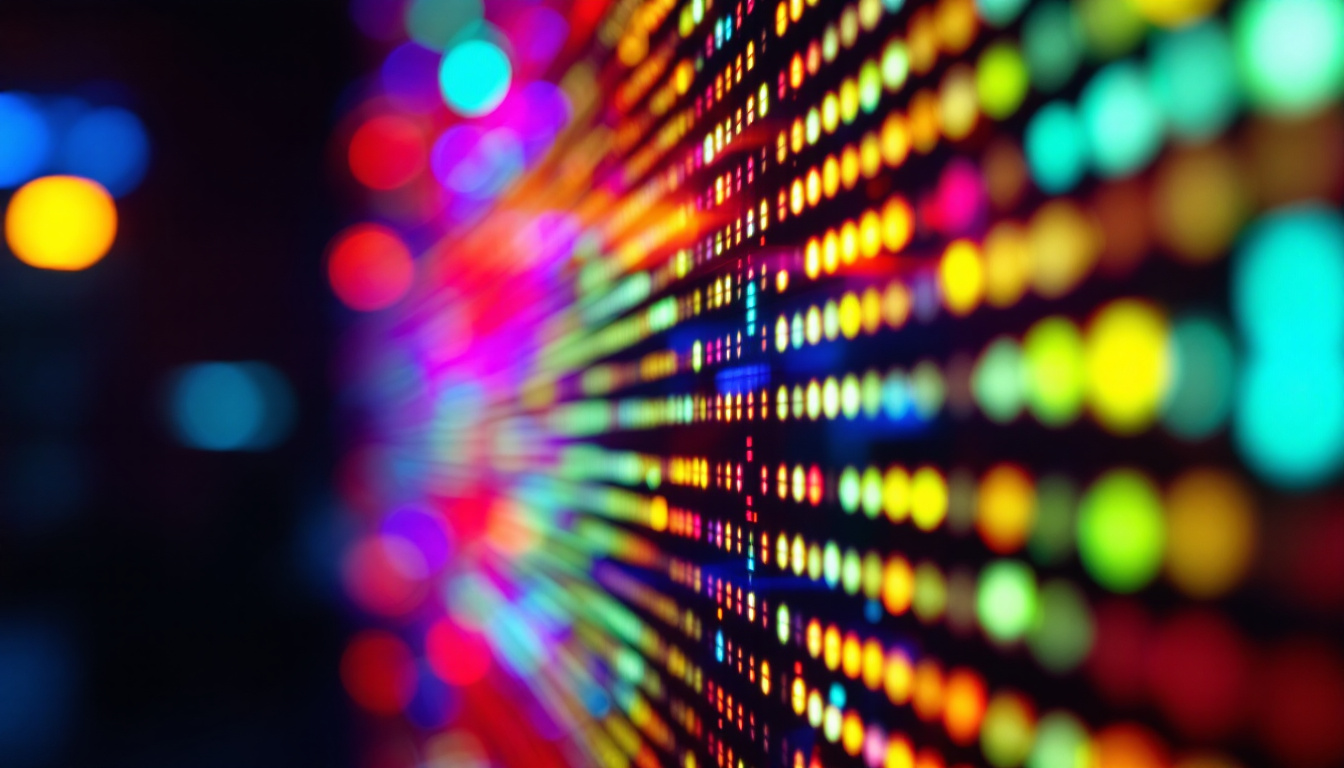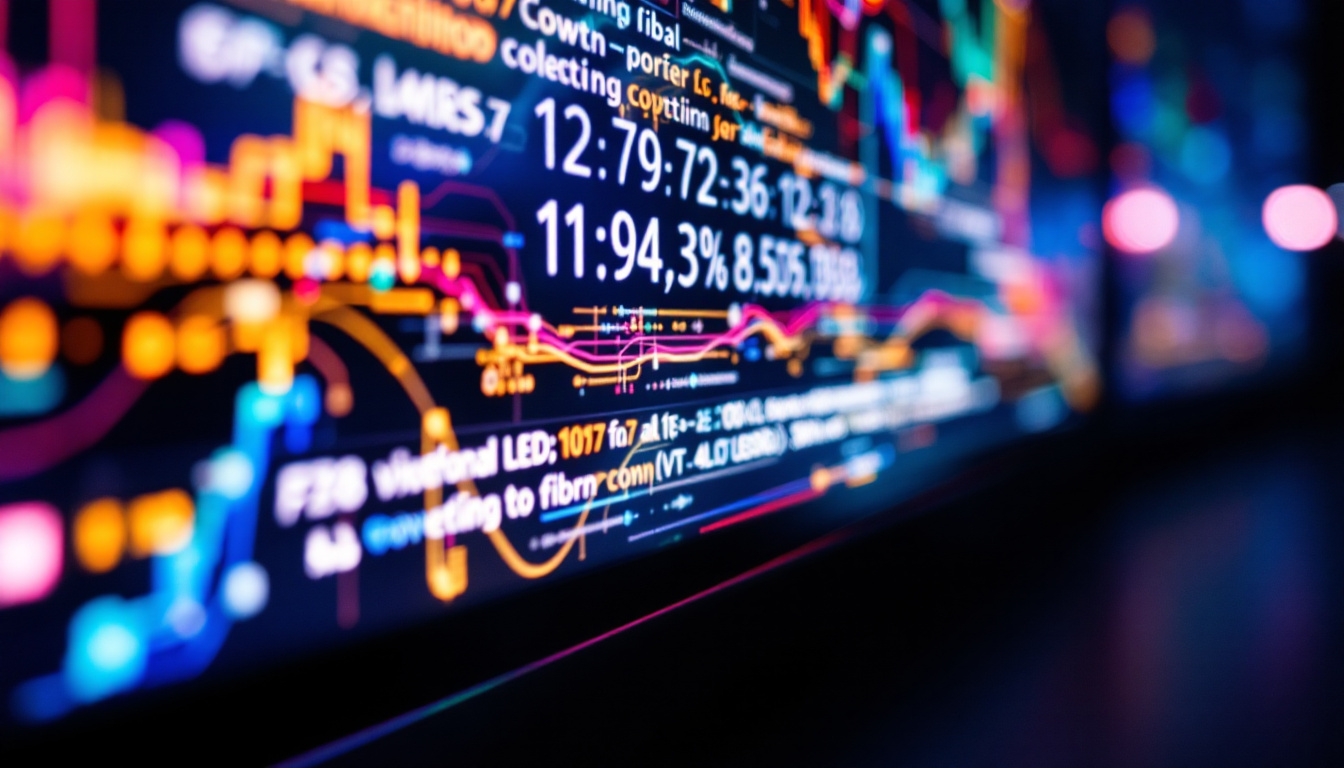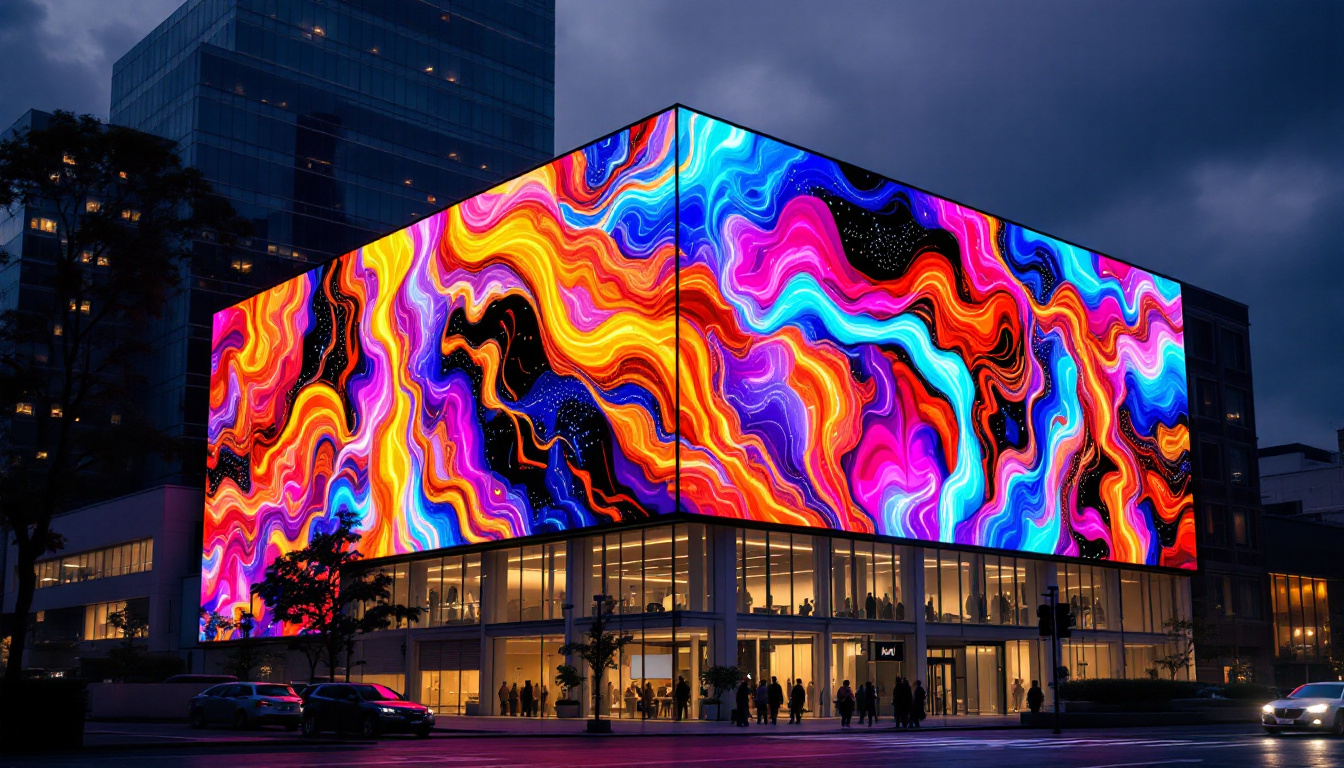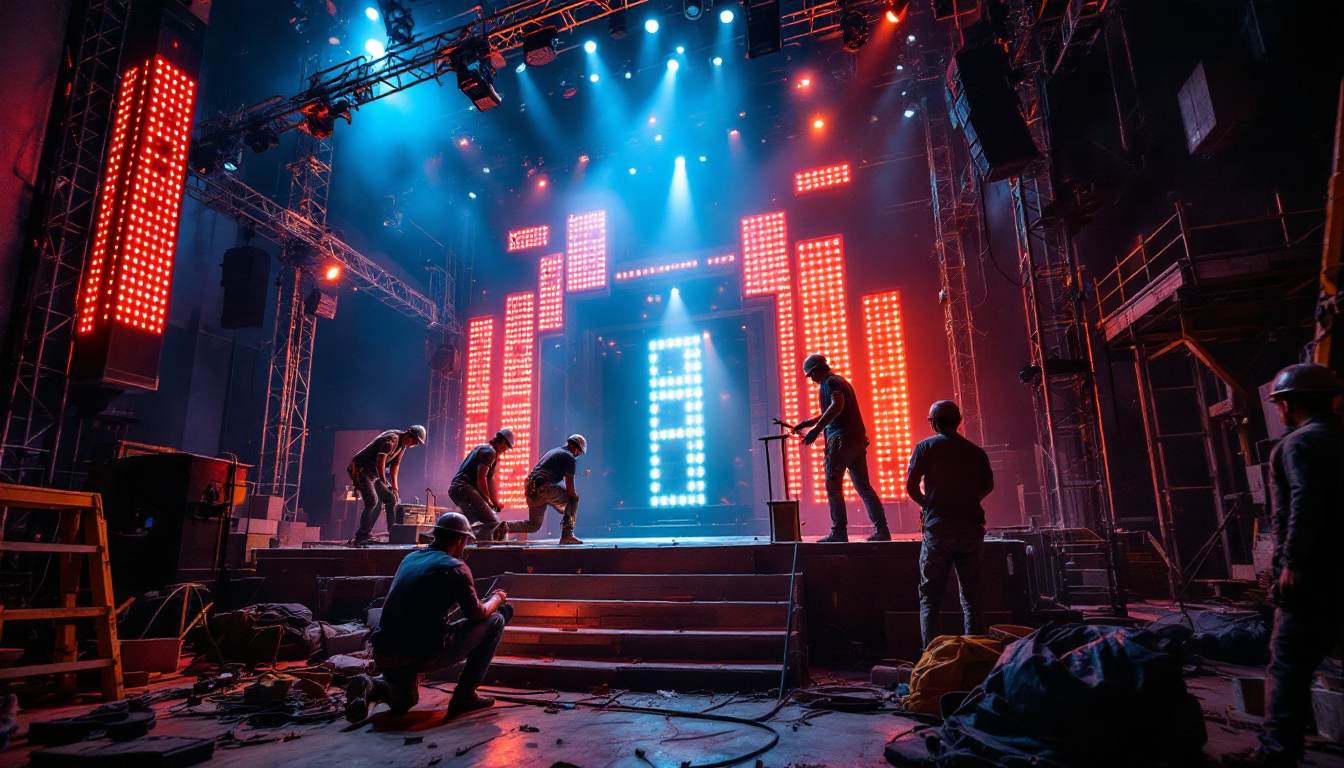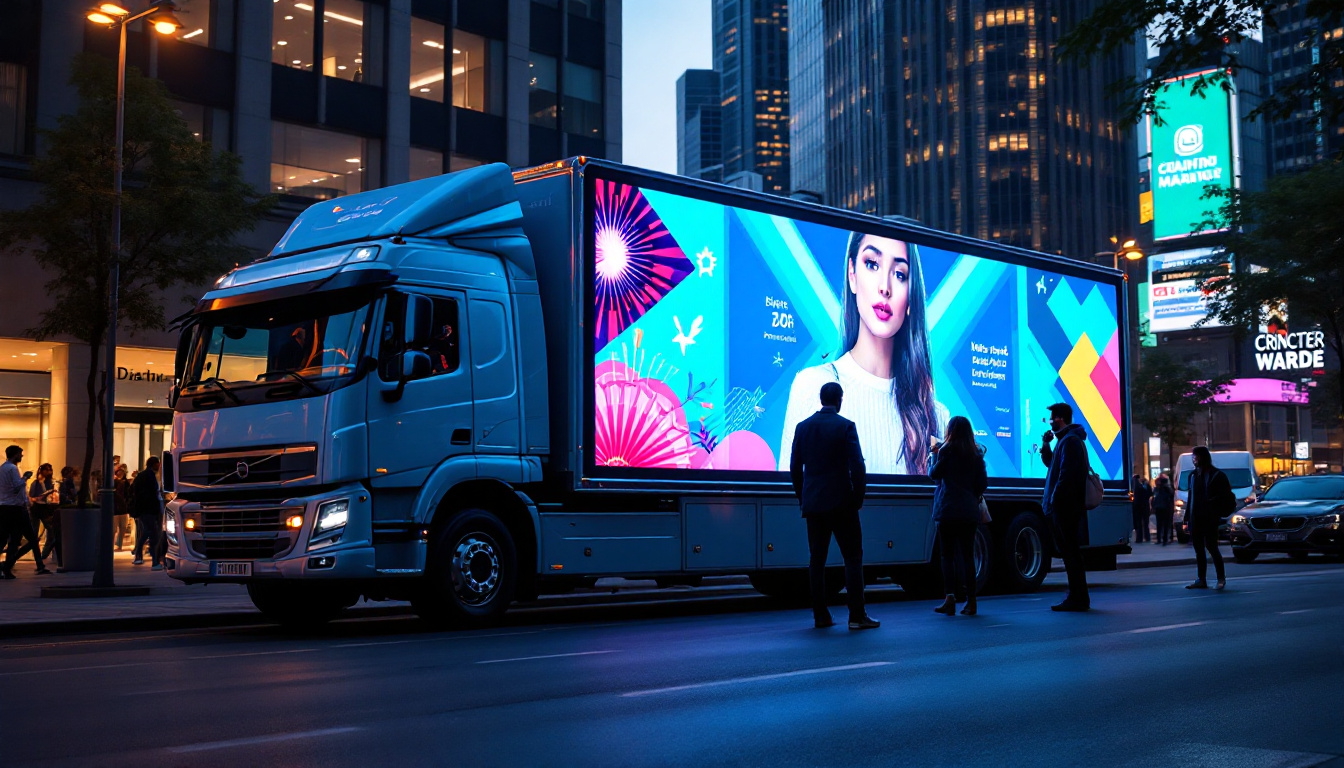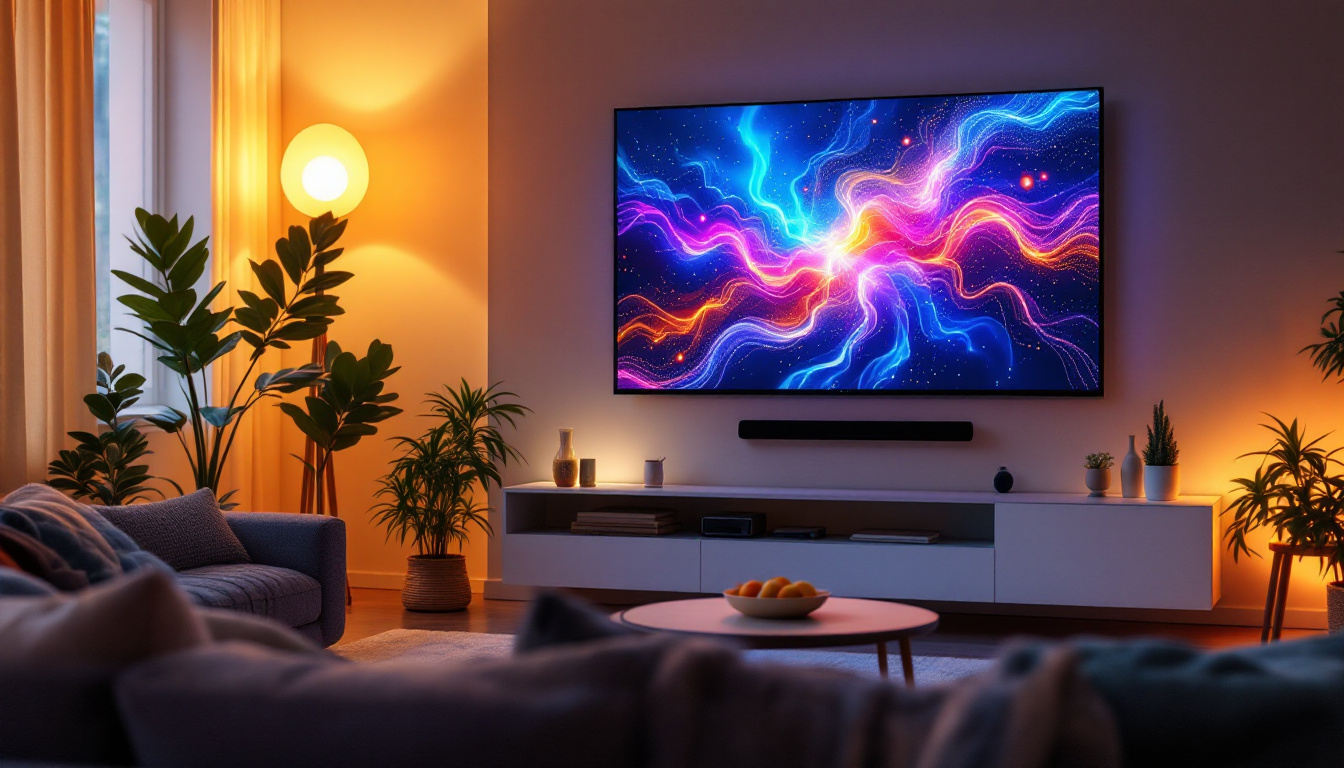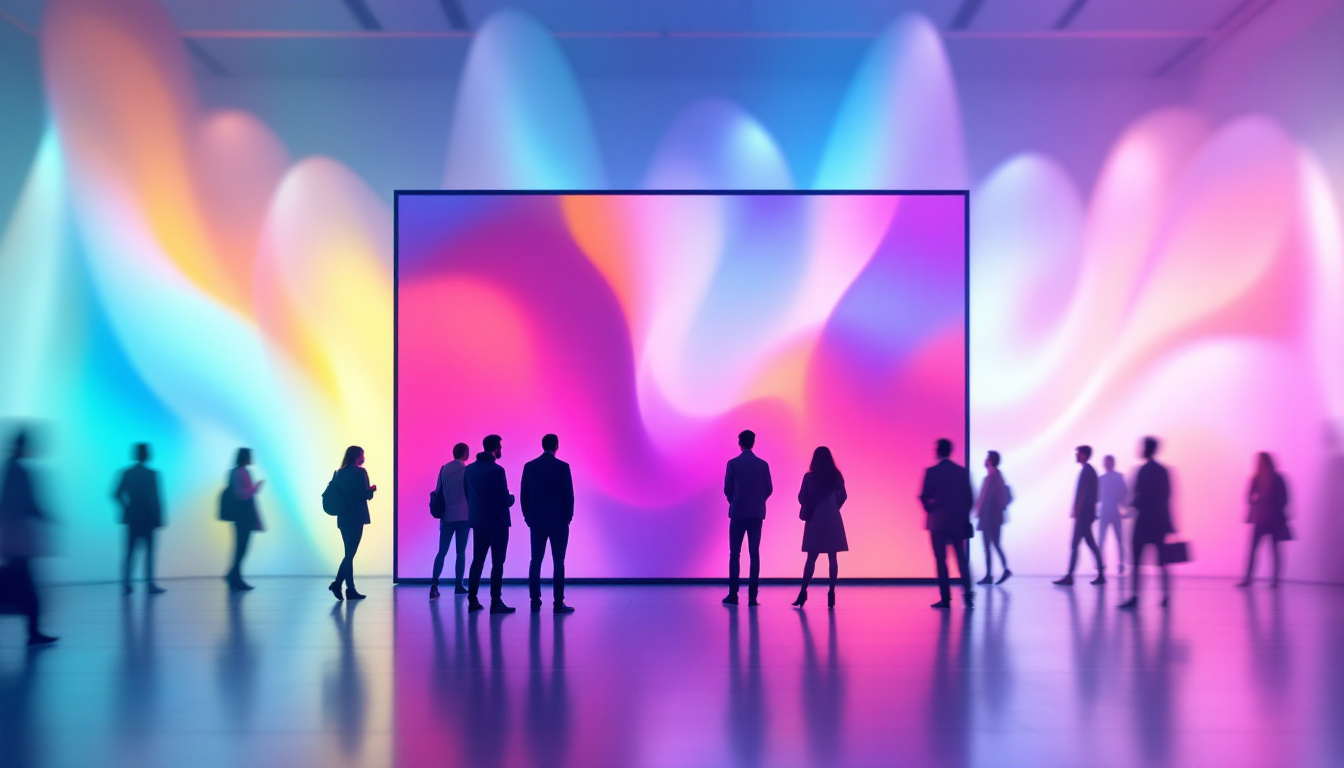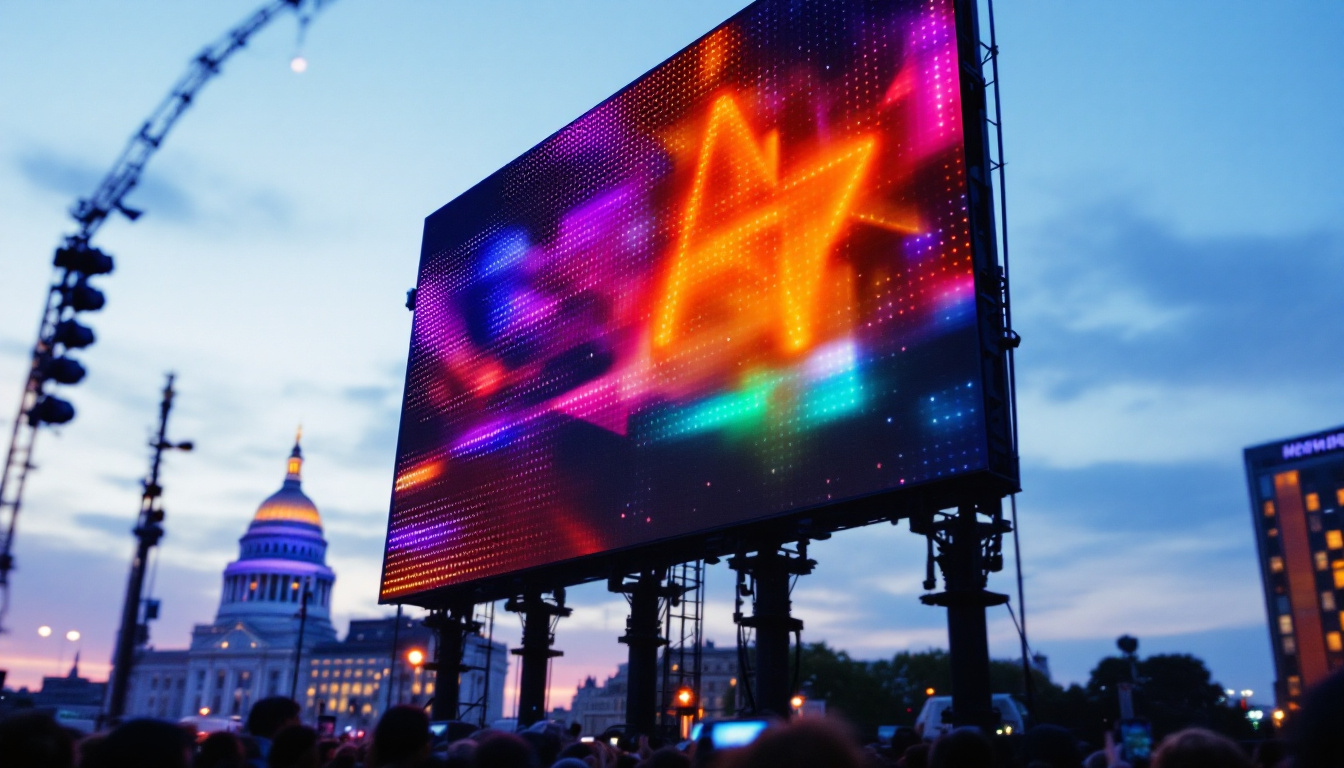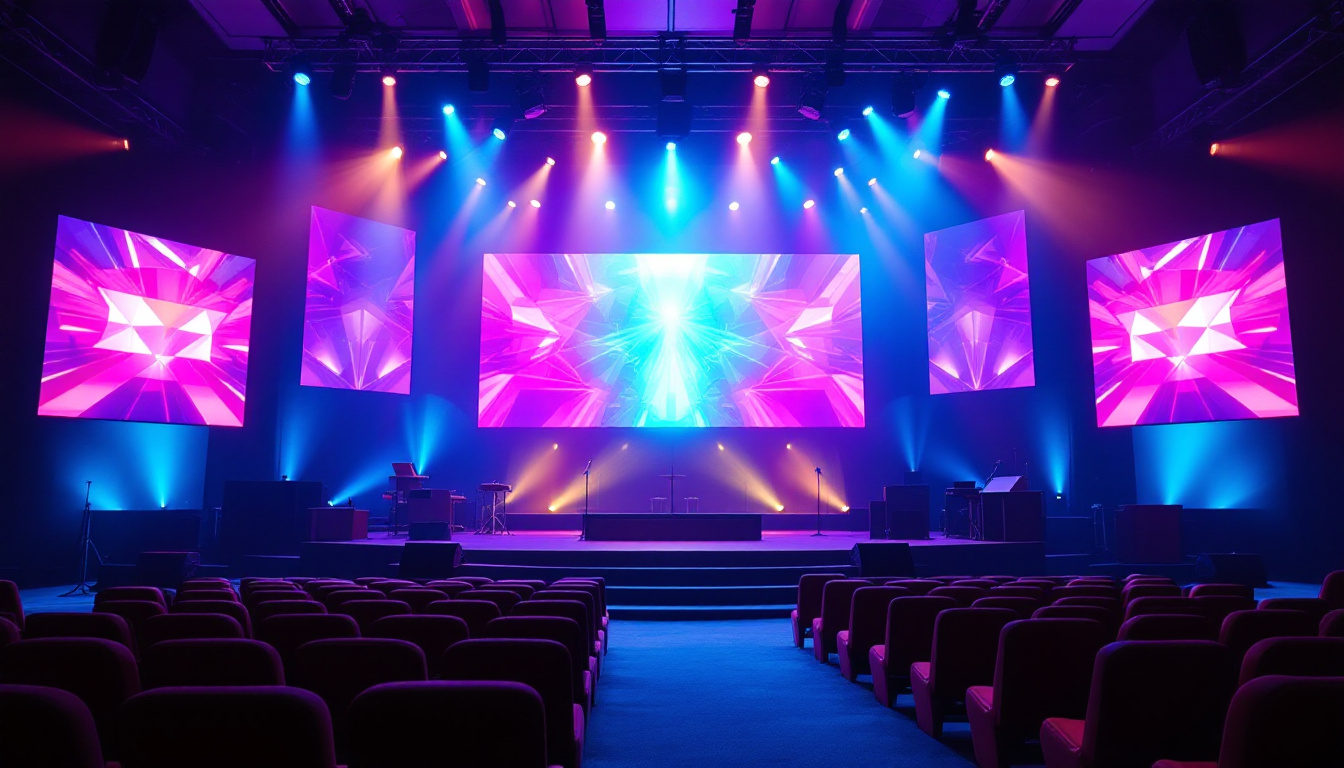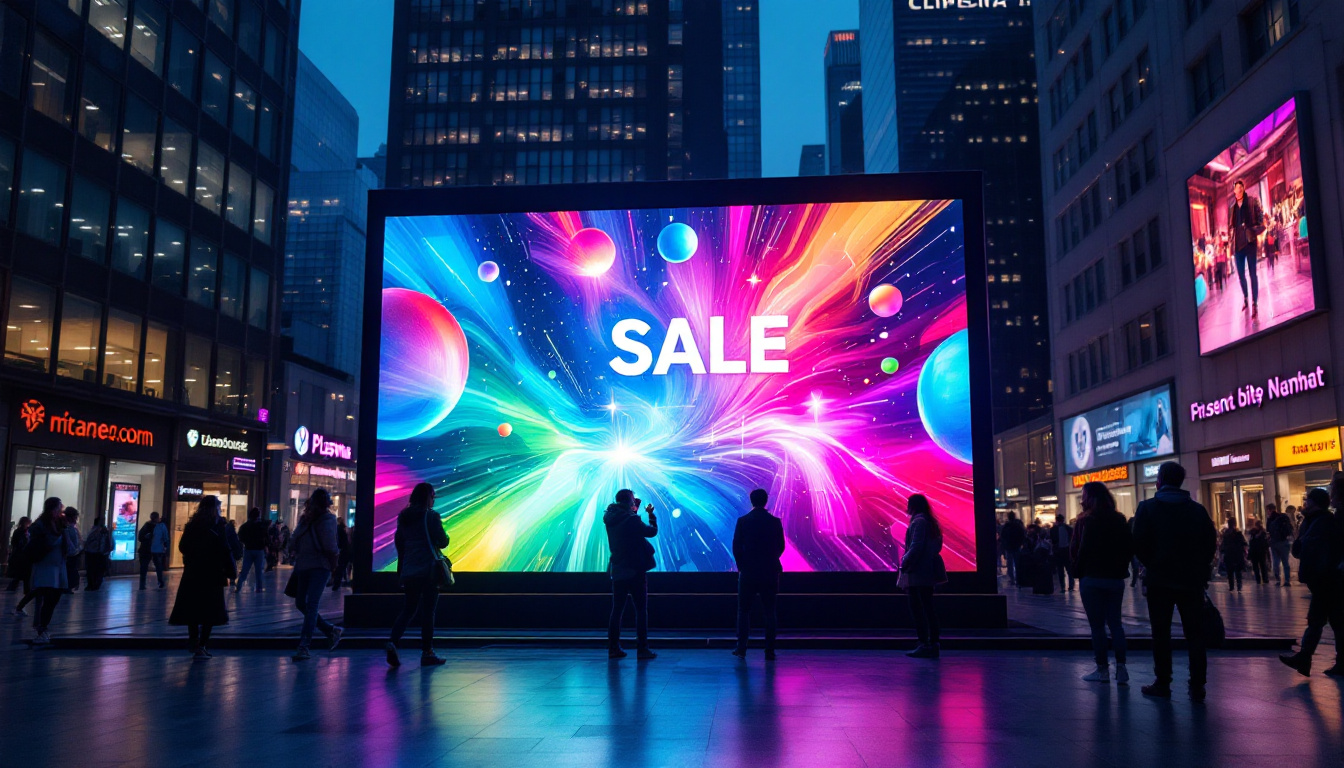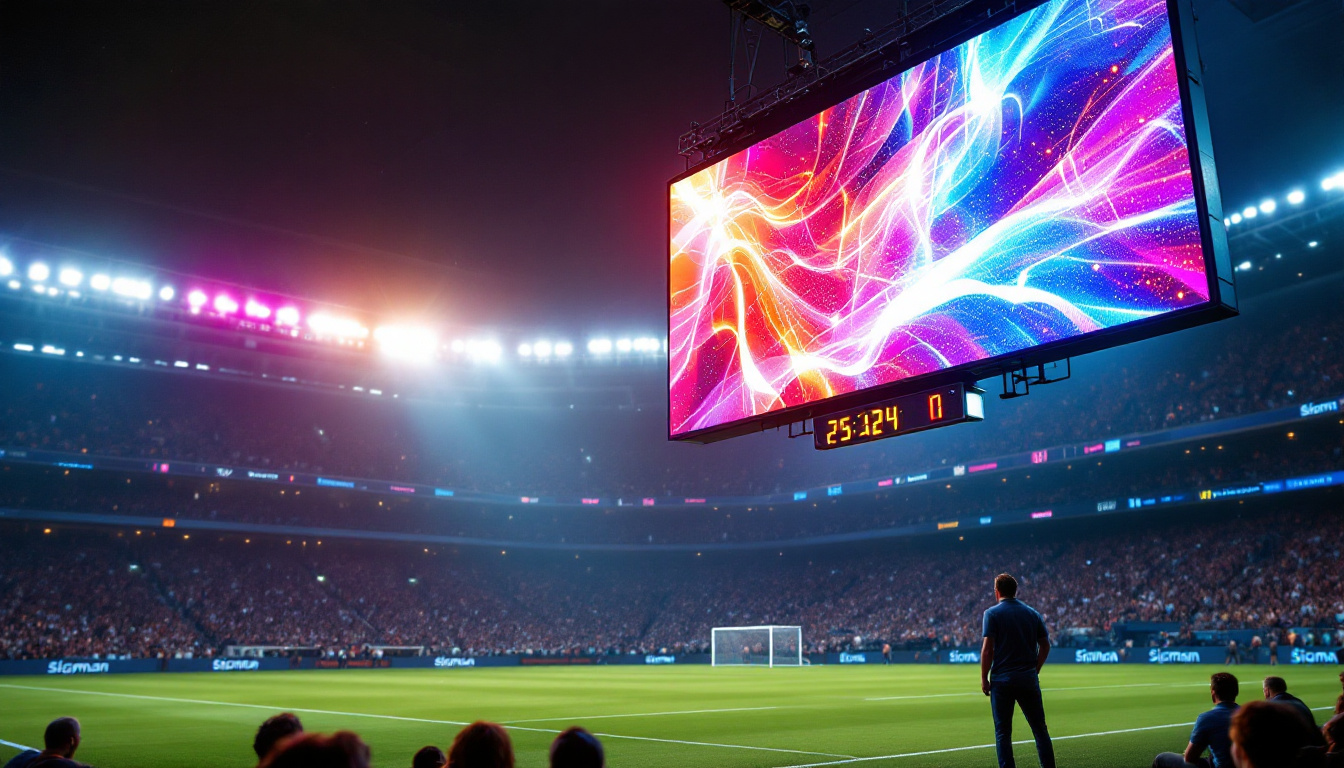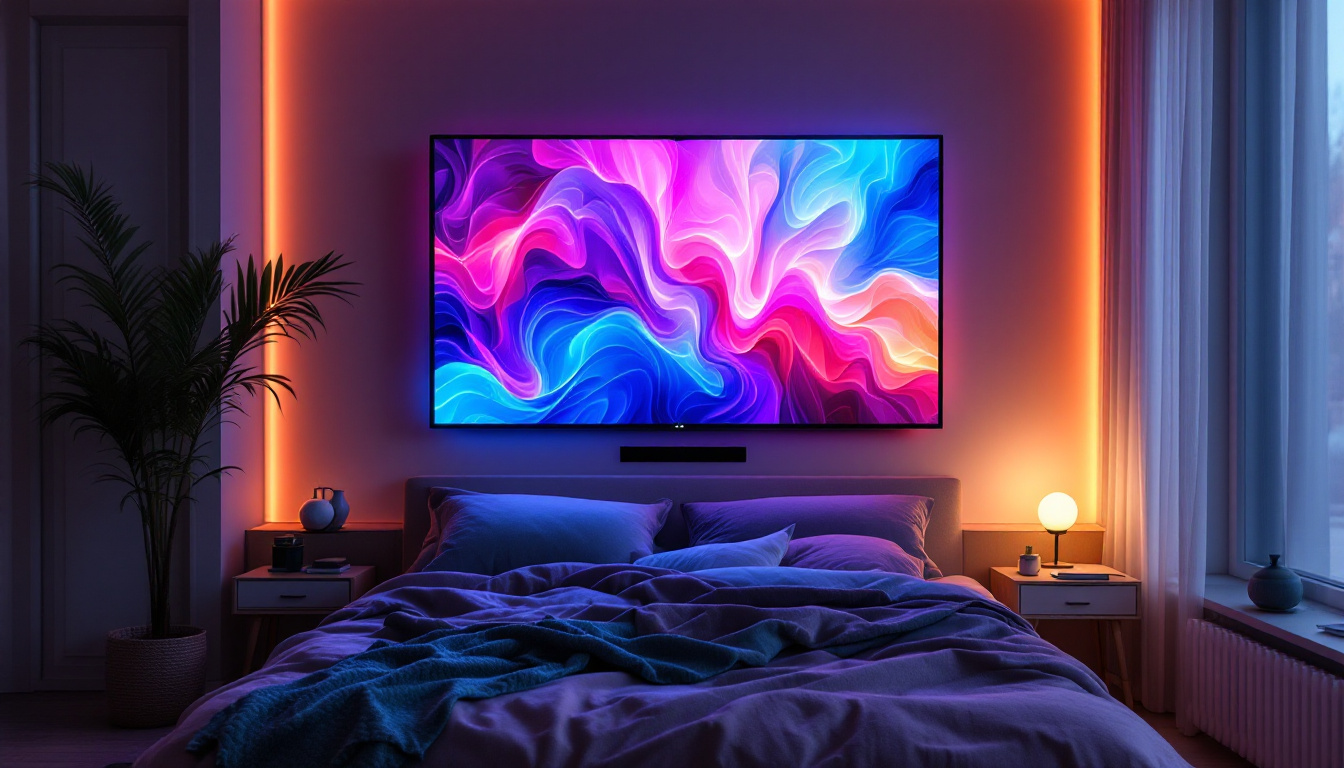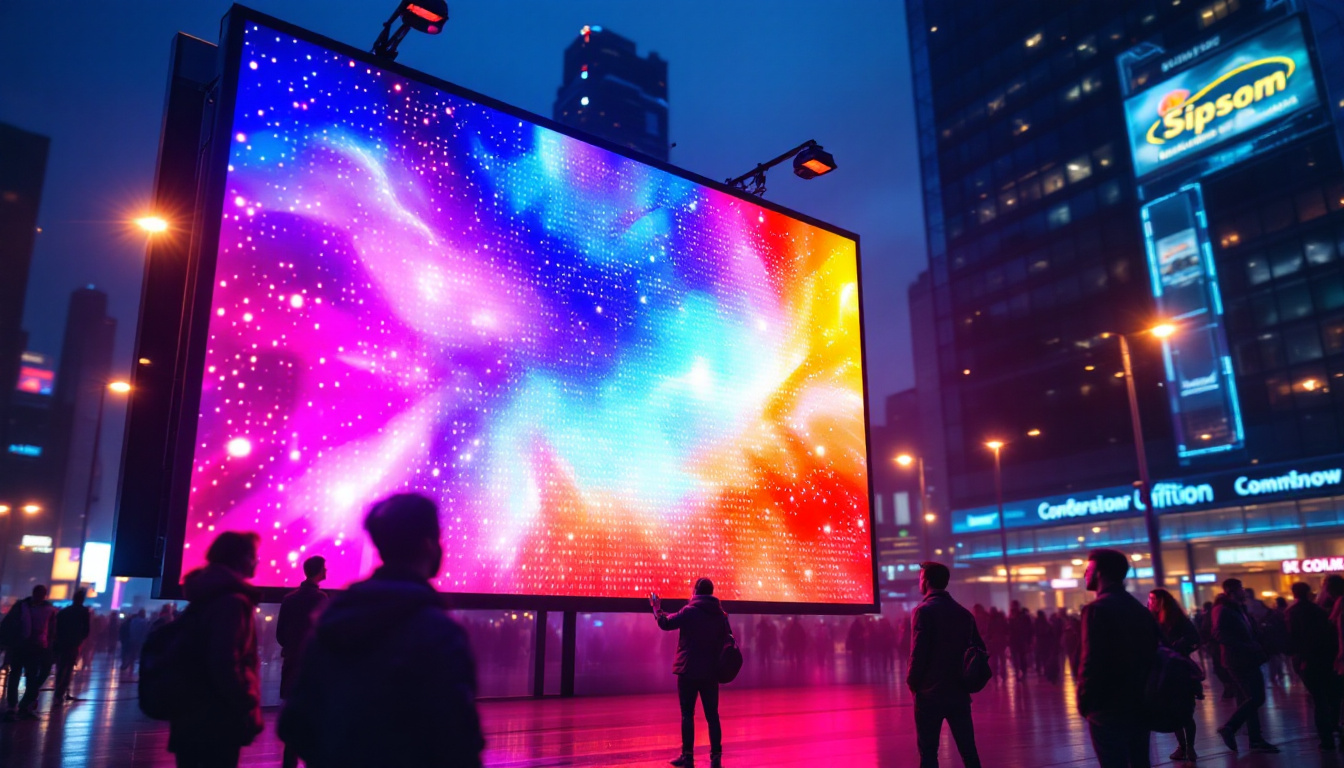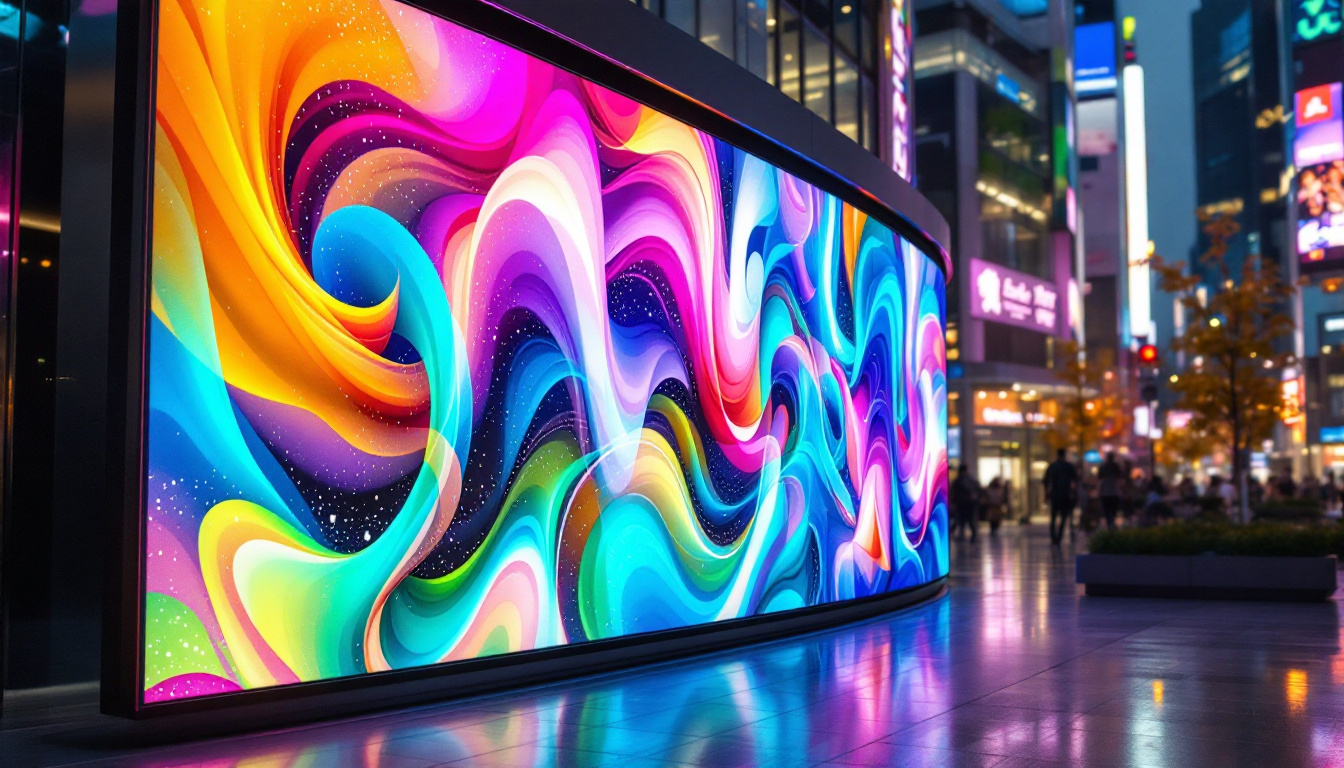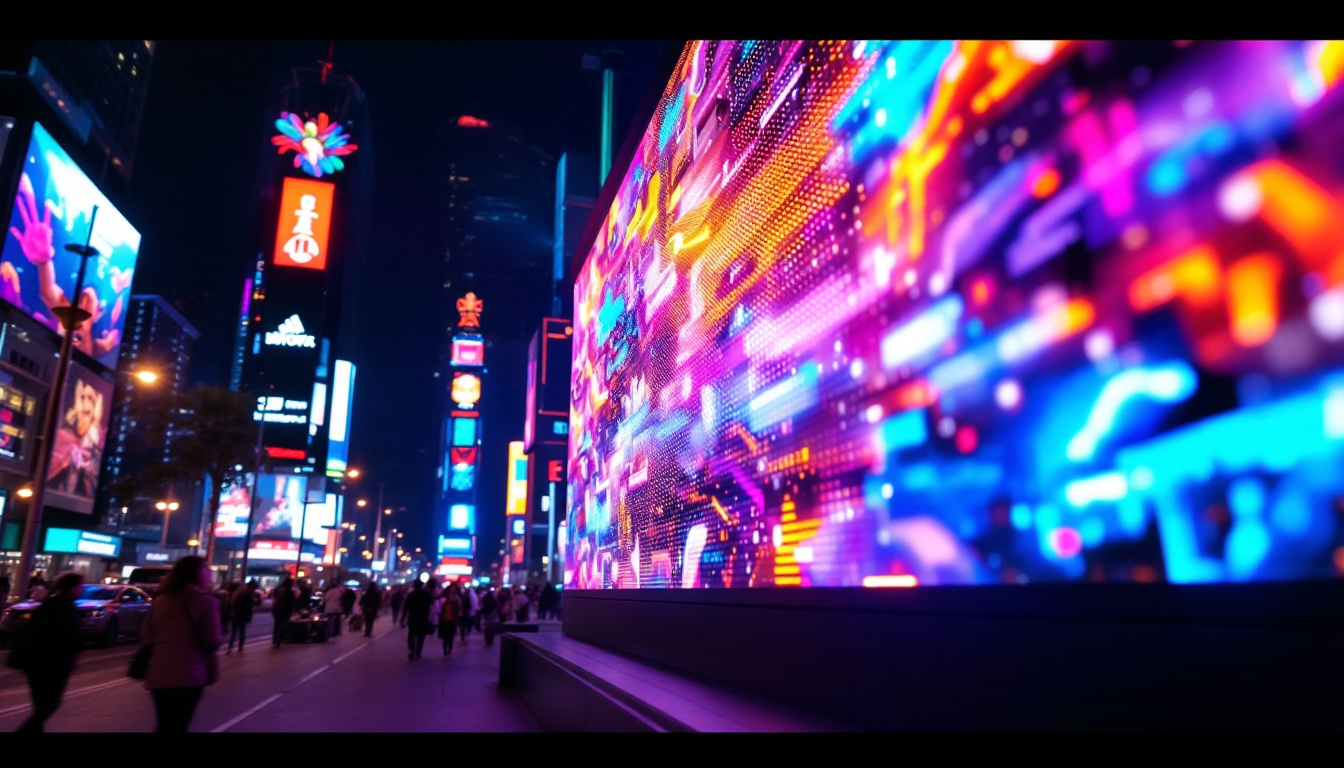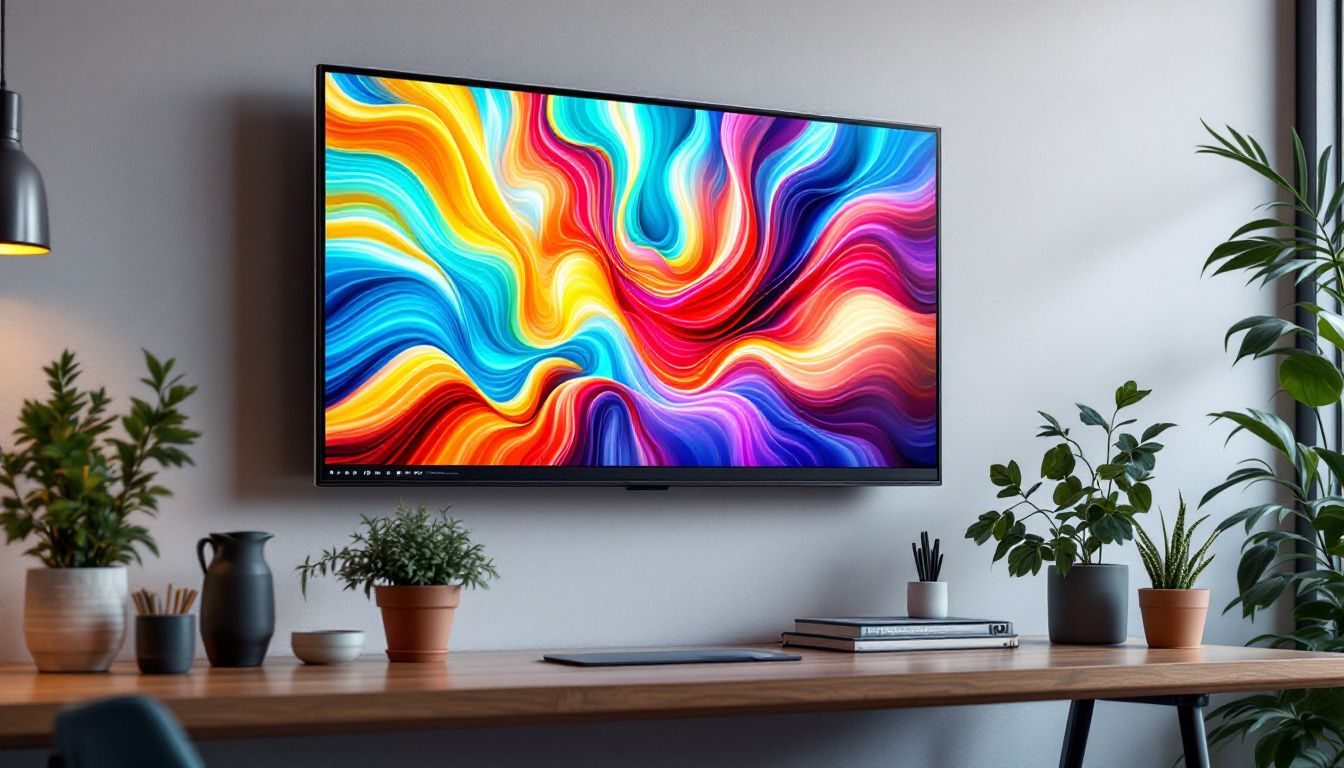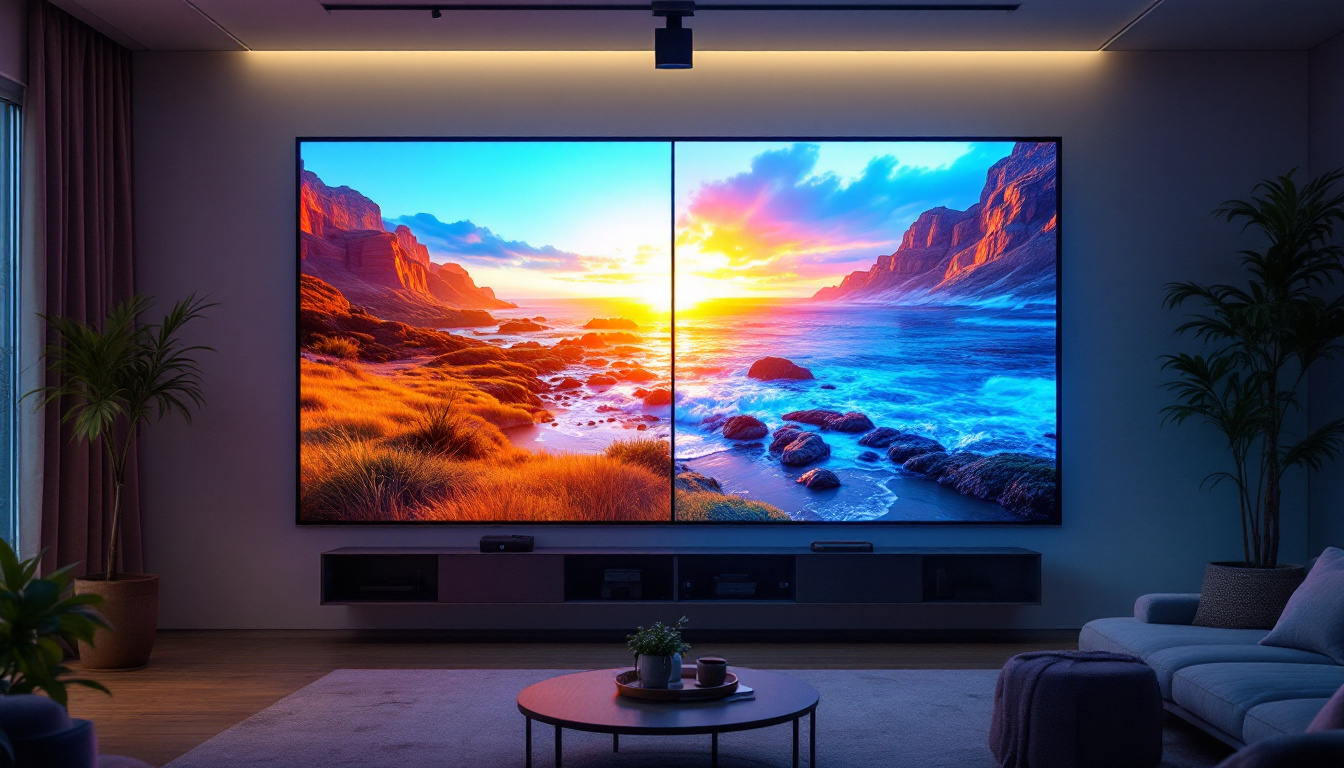In the ever-evolving landscape of technology, LED displays have emerged as a cornerstone of modern visual communication. With their vibrant colors, energy efficiency, and versatility, these displays are used in various applications, from televisions and smartphones to large outdoor billboards. Understanding how LED displays work and their advantages can help consumers and businesses make informed decisions about their use.
What is an LED Display?
LED, or Light Emitting Diode, displays utilize semiconductor technology to produce light. Unlike traditional displays that rely on backlighting, LED displays generate light directly from the diodes themselves. This fundamental difference allows for thinner, lighter, and more energy-efficient screens. The evolution of LED technology has transformed the way we experience visual media, offering enhanced brightness and clarity that significantly improves viewer engagement.
Moreover, the longevity of LED displays is another compelling advantage. With lifespans often exceeding 50,000 hours, they outlast many conventional display technologies, reducing the need for frequent replacements and contributing to lower overall costs in both residential and commercial settings. This durability also means that LED displays are more environmentally friendly, as they consume less energy and generate less waste over time.
Types of LED Displays
There are several types of LED displays, each tailored for specific applications. The most common types include:
- Direct View LED Displays: These displays consist of individual LED modules that create images by emitting light directly. They are often used in large-scale installations, such as stadiums and concert venues, where visibility from great distances is crucial. Their ability to produce vibrant colors and high brightness levels makes them ideal for outdoor advertising and live events.
- LED-backlit LCD Displays: These screens combine traditional LCD technology with LED backlighting, enhancing brightness and color accuracy. They are widely used in televisions and computer monitors. The integration of LED backlighting has allowed for thinner designs and improved energy efficiency, making them a popular choice for modern consumer electronics.
- Organic LED (OLED) Displays: A subset of LED technology, OLED displays use organic compounds to emit light. They offer superior contrast and color depth, making them popular in high-end televisions and smartphones. The flexibility of OLED technology also enables the creation of curved and even foldable displays, paving the way for innovative designs in the future.
How LED Displays Work
The operation of an LED display is based on the principles of electroluminescence. When an electric current passes through a semiconductor material, it emits light. This process occurs in the diodes that make up the display.
In a typical LED display, each pixel is made up of red, green, and blue (RGB) diodes. By varying the intensity of these three colors, a wide spectrum of colors can be produced. This RGB combination allows for the creation of detailed images and videos. The precise control over each pixel’s brightness and color not only enhances the viewing experience but also allows for dynamic content that can adapt to different environments and lighting conditions.
Additionally, advancements in technology have led to the development of smart LED displays that can connect to the internet and integrate with various applications. This capability enables features such as real-time updates, interactive content, and even remote management, making LED displays a versatile tool for businesses and advertisers. As a result, they have become an essential component in digital signage, providing a platform for engaging audiences in innovative ways.
Advantages of LED Displays
LED displays offer several advantages over traditional display technologies, making them a popular choice across various industries.
Energy Efficiency
One of the most significant benefits of LED displays is their energy efficiency. Compared to older technologies like incandescent or fluorescent displays, LEDs consume significantly less power. This not only reduces electricity bills but also contributes to a lower carbon footprint.
In commercial settings, the energy savings can be substantial, making LED displays an attractive option for businesses looking to cut costs while promoting sustainability. Furthermore, many LED displays come equipped with intelligent technology that adjusts brightness based on ambient light, further optimizing energy consumption. This smart feature ensures that the displays are not only cost-effective but also environmentally friendly, aligning with the growing trend of corporate responsibility towards sustainability.
Brightness and Visibility
LED displays are known for their exceptional brightness, making them highly visible even in direct sunlight. This characteristic is particularly advantageous for outdoor advertising and public information displays, where visibility is crucial for effective communication.
The high brightness levels also enhance the viewing experience in indoor environments, allowing for vibrant colors and sharp images that can be appreciated from various angles. Additionally, the wide color gamut of LED technology enables more accurate color reproduction, which is essential for applications in graphic design and digital art. This capability allows brands to present their visuals in the most striking and true-to-life manner, ensuring that their messages resonate with audiences effectively.
Longevity and Durability
LED displays are built to last. With a lifespan that can exceed 50,000 hours, they outlast many traditional display technologies. This longevity translates to lower maintenance costs and fewer replacements, making them a wise investment.
Moreover, LED displays are generally more durable and resistant to shock and vibration, making them suitable for a wide range of applications, from industrial settings to outdoor installations. Their robust construction allows them to withstand harsh weather conditions, including rain, snow, and extreme temperatures, which is particularly beneficial for outdoor signage. This resilience not only ensures consistent performance over time but also reduces the likelihood of downtime due to repairs, further enhancing their appeal for businesses that rely on continuous, reliable display solutions.
Applications of LED Displays
The versatility of LED displays allows them to be used in numerous applications across different sectors.
Advertising and Marketing
One of the most prominent uses of LED displays is in advertising. Digital billboards and signage leverage the brightness and color capabilities of LEDs to capture attention and convey messages effectively. These displays can be updated in real-time, allowing businesses to promote special offers, events, or announcements dynamically.
In retail environments, LED displays are used for product promotions, enhancing the shopping experience and driving sales. Their ability to showcase vibrant visuals makes them an essential tool for marketers.
Entertainment and Events
In the entertainment industry, LED displays play a crucial role in concerts, festivals, and sporting events. Large-scale LED screens provide audiences with an immersive experience, displaying live feeds, graphics, and animations that enhance the overall atmosphere.
Moreover, the flexibility of LED technology allows for creative stage designs, where screens can be shaped and arranged in various configurations to create stunning visual effects.
Information and Communication
LED displays are also widely used for informational purposes. Transportation hubs, such as airports and train stations, utilize LED screens to display real-time updates on schedules and arrivals. Similarly, educational institutions employ LED displays for announcements and event information, ensuring that important messages reach students and staff promptly.
Challenges and Considerations
While LED displays offer numerous advantages, there are challenges and considerations to keep in mind when implementing this technology.
Initial Cost
The initial investment for LED displays can be higher than traditional display technologies. This upfront cost may deter some businesses or individuals from making the switch. However, it is essential to consider the long-term savings associated with energy efficiency and reduced maintenance costs.
As technology advances and production methods improve, the prices of LED displays are gradually decreasing, making them more accessible to a broader audience.
Heat Generation
LED displays can generate heat during operation, particularly in high-brightness applications. Proper thermal management is crucial to ensure optimal performance and longevity. In some cases, additional cooling systems may be required, adding to the overall installation complexity and cost.
Viewing Angles
While LED displays offer excellent brightness and color accuracy, the viewing angle can vary depending on the technology used. Direct view LED displays tend to have better viewing angles compared to traditional LCDs. However, it is essential to consider the installation environment and audience positioning to ensure an optimal viewing experience.
Future Trends in LED Display Technology
The future of LED display technology is promising, with ongoing advancements that will continue to enhance their capabilities and applications.
MicroLED Technology
MicroLED technology represents the next evolution in LED displays. This innovative approach utilizes microscopic LEDs to create individual pixels, resulting in higher resolution and improved color accuracy. MicroLED displays are expected to be thinner, lighter, and more energy-efficient than current LED technologies, paving the way for new applications in consumer electronics and beyond.
Flexible and Transparent Displays
Another exciting development in LED technology is the creation of flexible and transparent displays. These displays can be bent or curved, allowing for creative designs in various applications, from wearable technology to architectural installations. Transparent displays offer the potential for new advertising formats, enabling brands to engage consumers in unique ways.
Integration with Smart Technologies
As the Internet of Things (IoT) continues to expand, LED displays are increasingly being integrated with smart technologies. This integration allows for real-time data sharing and interactivity, enabling businesses to create dynamic content that responds to audience behavior and preferences. Such advancements will enhance the effectiveness of advertising and communication strategies.
Conclusion
LED displays have revolutionized the way we communicate visually, offering a blend of efficiency, durability, and versatility. From advertising and entertainment to information dissemination, their applications are vast and varied. While there are challenges to consider, the benefits often outweigh the drawbacks, making LED displays a worthwhile investment for both individuals and businesses.
As technology continues to evolve, the future of LED displays looks bright, with innovations on the horizon that promise to enhance their capabilities even further. Embracing this technology can lead to improved engagement, increased visibility, and a more sustainable approach to visual communication.
Discover the Future of Visual Communication with LumenMatrix
Ready to elevate your visual engagement? Explore the innovative world of LumenMatrix LED display solutions, where cutting-edge technology meets creative design. From vibrant Indoor LED Walls to dynamic Outdoor Displays and beyond, LumenMatrix offers a comprehensive range of products tailored to bring your brand to life. Whether you’re looking to captivate audiences, enhance brand visibility, or create immersive experiences, our LED displays are engineered to deliver unparalleled impact. Don’t miss the opportunity to transform your visual communication strategy. Check out LumenMatrix LED Display Solutions today and see your message shine like never before.

